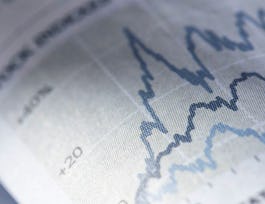We make economics decisions every day: what to buy, whether to work or play, what to study. We respond to markets all the time: prices influence our decisions, markets signal where to put effort, they direct firms to produce certain goods over others. Economics is all around us.



Microeconomics: The Power of Markets

Instructor: Rebecca Stein
Sponsored by Coursera Learning Team
80,634 already enrolled
(1,581 reviews)
Skills you'll gain
Details to know

Add to your LinkedIn profile
18 quizzes
See how employees at top companies are mastering in-demand skills


Earn a career certificate
Add this credential to your LinkedIn profile, resume, or CV
Share it on social media and in your performance review

There are 5 modules in this course
Where do markets come from? We will start with understanding the constraint of scarcity that we face and the concept of opportunity cost that reflects the true cost of any decision we make. We will learn to model scarcity using the Production Possibilities Frontier that allows us to visualize tradeoffs, distinguish between efficient, inefficient and unattainable points. We will also discuss how economic growth affects our options and allows us to achieve the previously unattainable.
What's included
17 videos2 readings3 quizzes1 discussion prompt
Trade allows us to achieve the unattainable- we can consume more than we can produce on our own. We will introduce the concept of Comparative Advantage and discuss how gains from specialization allow us to use our resources efficiently. We will apply these concepts to a simple model of trade, showing that now the Consumption Possibilities Frontier allows points outside the Production Possibilities Frontier.
What's included
14 videos1 reading2 quizzes1 discussion prompt
We will introduce the central model of Supply & Demand. This will allow you to communicate with other economists and finally understand those business pages and market updates. We will distinguish between a movement along and a movement of the supply & demand curves. We will define market equilibrium as understand that at an equilibrium price there is neither excess demand nor excess supply. We will end by a few scenarios where exogenous changes affect supply and/or demand and analyze the impact on equilibrium price and quantity.
What's included
15 videos1 reading4 quizzes1 discussion prompt
There is a lot of terminology this week. We will introduce of the concept of elasticity of demand that measures the responsiveness of quantity demanded to a change in the price of a good. We will explore the relationship between change in price and revenue or sales and how elasticities can help us predict whether a decrease in price will increase or decrease revenue. We then introduce other elasticities of note: cross price elasticity, income elasticity and elasticity of supply. We end the week by exploring the great accomplishment of markets: maximizing the size of the pie or the total benefit to society.
What's included
23 videos1 reading4 quizzes1 discussion prompt
In week four we learnt that the markets maximize the surplus that can be generated. So what happens if the government steps in and intervenes in the market? This week we will analyze price floors and ceilings, taxes and subsidies and learn how the best intentions sometimes lead to very unfortunate results.
What's included
16 videos1 reading5 quizzes1 discussion prompt
Instructor

Offered by
Why people choose Coursera for their career




Learner reviews
1,581 reviews
- 5 stars
79.25%
- 4 stars
17.33%
- 3 stars
2.65%
- 2 stars
0.44%
- 1 star
0.31%
Showing 3 of 1581
Reviewed on May 3, 2016
Nice, short and interesting videos. The assignments are not too difficult or too easy. You can see, that Mrs Stein put a lot of effort into the videos and explanations.
Reviewed on May 16, 2020
The information I gained during this course will surely help me in becoming a better economist in the future and I found all the concepts quite easy as they were explained very well.
Reviewed on Jun 24, 2022
The content was comprehensive and I suggest it as a good introductory stamdpoint to the microeconomic situation. Perhaps it could've been more engaging by referencing real-world incidents.
Recommended if you're interested in Social Sciences

Alfaisal University | KLD

McMaster University

IE Business School

University of Illinois Urbana-Champaign

Open new doors with Coursera Plus
Unlimited access to 10,000+ world-class courses, hands-on projects, and job-ready certificate programs - all included in your subscription
Advance your career with an online degree
Earn a degree from world-class universities - 100% online
Join over 3,400 global companies that choose Coursera for Business
Upskill your employees to excel in the digital economy


